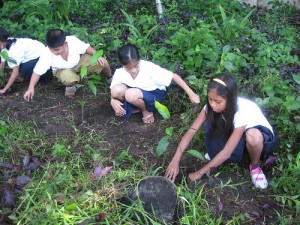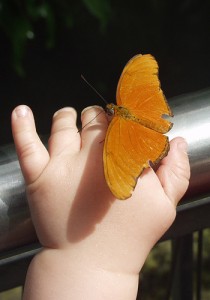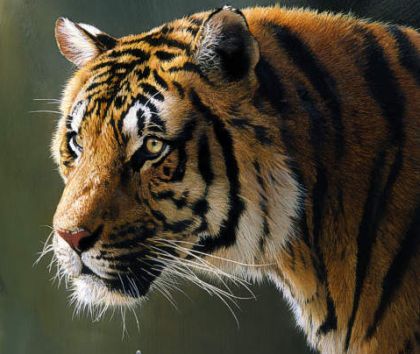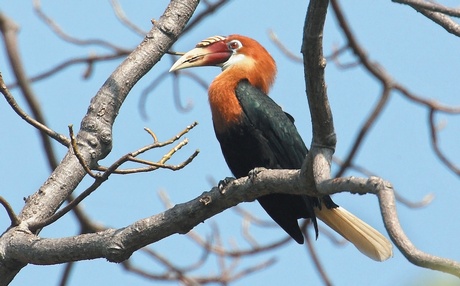Children today are getting closer to technology but distant from nature. They listen to music on MP3 players but cannot recognize the sweet song and calls of the birds. They enjoy Jacuzzi baths and swimming pools but don’t know the joys of swimming in ponds or just diving into a free flowing stream. They watch videos about animals on the internet, but have never seen the magnificence of a lion in the wild. They play war games online, but do not know the exhilaration of climbing trees and skinning their knees in the process. The virtual world of computers has practically replaced every aspect of Nature.
While being techno savvy is essential for success in the modern world, being nature savvy is really the key to survival. Nature is a treasure trove of information; it is a world where a butterfly can help teach children the fine art of flying. A trek to the mountain top is not only heart healthy, it helps widen the perspective, increase curiosity and develops a practical know how that no online mountaineering game can teach.
There is a dire need for the children today to spend time outdoors, commune more with the nature and learn about wildlife and the environment. Only when they learn more about the bio-diversity of the Earth, will they understand about why all things natural need to be conserved.
Here are some suggested activities that can bring children closer to nature, this summer and all the year round,
 Drama workshop
Drama workshop
Select a story like Rudyard Kipling’s Jungle Book, and make children come up with a play script based on the story. Learning about the environment could be made more fun when children actually enact roles of animals, plants etc. They also learn to interact more with others, increase their public speaking skills and start getting involved with nature.
Reduce, Reuse, Recycle
Sewing together papers which have one used side helps create a scrap-book. Re-using the water used to wash vegetables to water potted plants helps save water. By simple day –today recycling DIYs, kids can understand the magic of creating new stuff from old stuff and also the important lesson of saving natural resources. By giving a little direction to their creativity, children will immediately come up with their own new ideas of conservation.
Field Trips
A field trip is not necessarily a day tour to the country side. Even a visit to the neighbourhood park can turn into an adventure, if you know how. Ask kids to find out how many different birds they can find in the park. Next help them identify each one and see if they can find the bird’s nest, its chicks etc. Same activity can be converted to an insect hunt, a butterfly hunt or a small animal hunt. Before long kids would like to take the next step of going to a nature park or a forest to try and take their identification skills to the next level.
Nature Mart
Gather kids of a locality and ask them to make environment friendly cards, pen stands or other arty stuff. These can then be displayed and sold in the neighbourhood fare. The proceeds of the Sale could be used to support an important cause like the ‘Save the Tiger’ Project.
 Participate in Conservation efforts
Participate in Conservation efforts
Every city has some conservation organisations that are doing something good for the environment. If kids are encouraged to join these efforts, in their own little way, the lesson will go far in sealing their bond with environment. If contacting a big organisation seems too intimidating, kids can be encouraged to start their own campaign like ‘Plant a Tree’, ‘save the lake frogs’ in their own area. They could also participate in world conservation events such as the Earth day & Earth week by picking out a ‘green activity’ to do.
Meet the Professionals
Parents today want their kids to become engineers and doctors but rarely a forest ranger, a veterinary surgeon or an animal rescue worker. Interaction with people who have chosen a career in fields like the Environmental science, Forestry, Veterinary sciences etc can help widen the career prospects of many teenagers. Most of these professionals would love to speak to children about their work and can encourage many young minds to follow their footsteps.
Nature Media
Sometimes simply subscribing to a magazine like Sancturary Asia, Geo or National Geographic can help children develop an interest about flora and fauna. TV watching can be screened and children can be encouraged to watch animal shows for a little time every day.
 Eco-travel
Eco-travel
For the next holidays plan a visit to a national park, a beach or a world heritage site. It will help children see for themselves how animals live in the wild, how plants grow, what a tropical forest really means and a lot many different things.
Use of Technology
Finally, Technology too is a wonderful tool, if it is used to help spread the word about the environment. Parents can start simple environmental blogs where kids write about their every day experiences with nature. It could be about a cycling trip or a discovery of a new caterpillar in the garden, it could be about a good book they read or how they celebrated earth day.
The first big step towards nature is by switching off the television and letting children know that there are greater adventures to be discovered, if only they look around themselves. Start connecting with nature in whichever way you can, and see how that is the one thing that children find the most interesting of all hobbies and chores.
If you have other suggestions to add, please feel free to comment.
Images via cc/Flickr by ceeshek , USAG-Humphreys , treesftf





4 thoughts on “How Children can get Close to Nature”